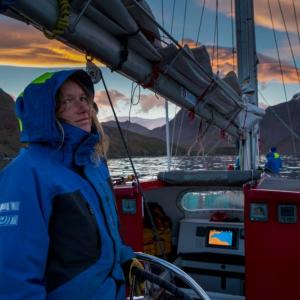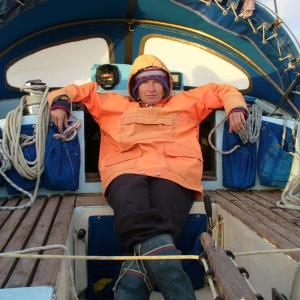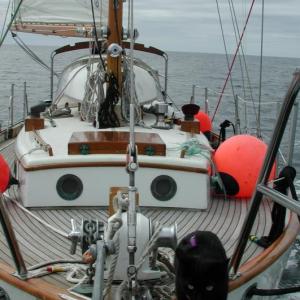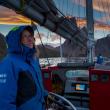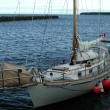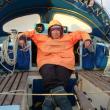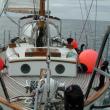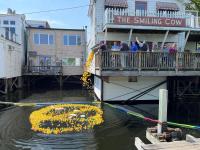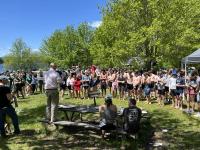Kirsten Neuschafer prepares in Midcoast for solo-sail Golden Globe Race
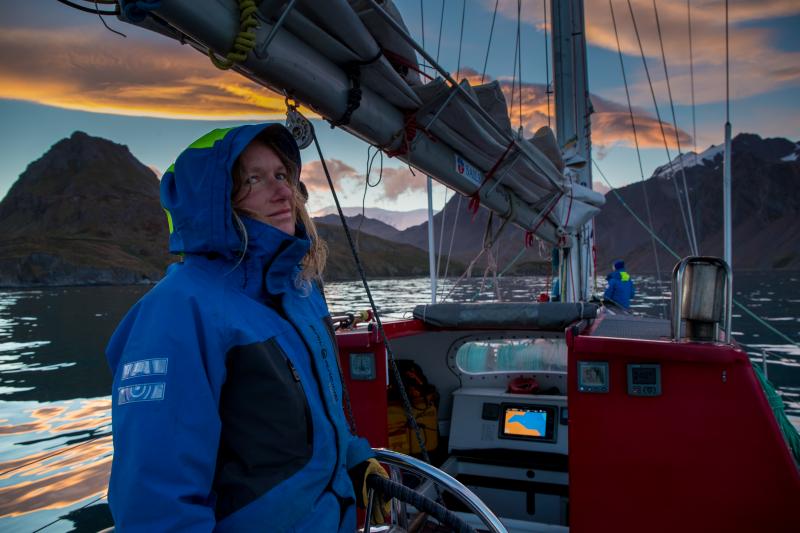 Kirsten Neuschafer. (Photo by Bertie Gergory)
Kirsten Neuschafer. (Photo by Bertie Gergory)
 A photo of the boat Kirsten Neuschafer will sail in the Golden Globe Race 2022. (Photo by Nathalie Proulx)
A photo of the boat Kirsten Neuschafer will sail in the Golden Globe Race 2022. (Photo by Nathalie Proulx)
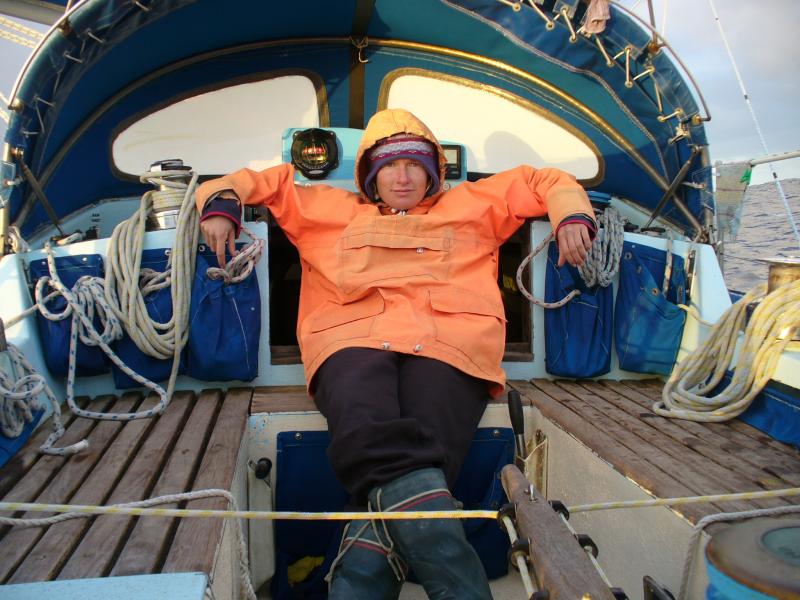 Kirsten Neuschafer. (Courtesy Kirsten Neuschafer)
Kirsten Neuschafer. (Courtesy Kirsten Neuschafer)
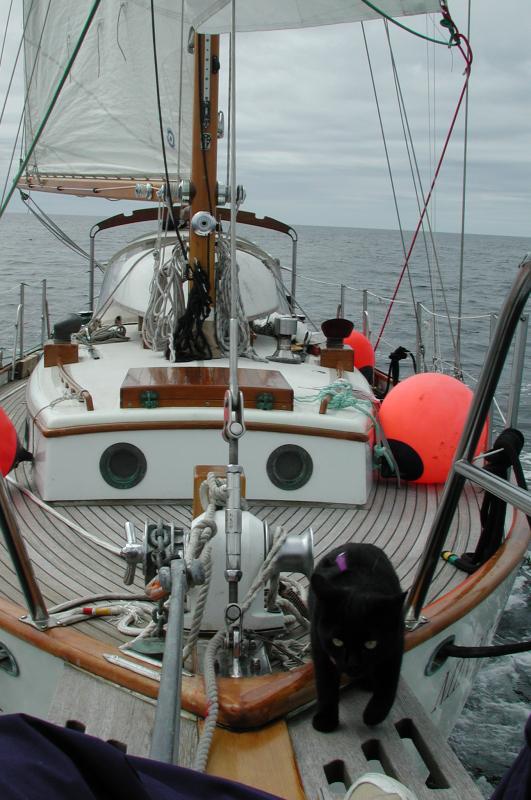 A photo of the boat Kirsten Neuschafer will sail in the Golden Globe Race 2022. (Photo by Nathalie Proulx)
A photo of the boat Kirsten Neuschafer will sail in the Golden Globe Race 2022. (Photo by Nathalie Proulx)
 Kirsten Neuschafer. (Photo by Bertie Gergory)
Kirsten Neuschafer. (Photo by Bertie Gergory)
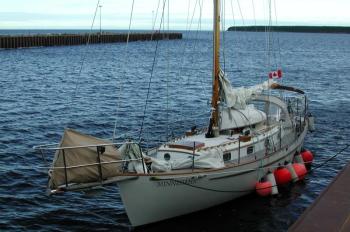 A photo of the boat Kirsten Neuschafer will sail in the Golden Globe Race 2022. (Photo by Nathalie Proulx)
A photo of the boat Kirsten Neuschafer will sail in the Golden Globe Race 2022. (Photo by Nathalie Proulx)
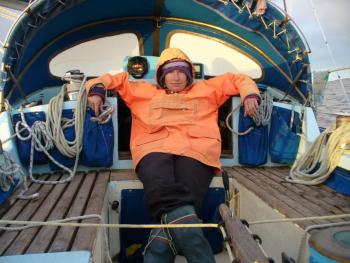 Kirsten Neuschafer. (Courtesy Kirsten Neuschafer)
Kirsten Neuschafer. (Courtesy Kirsten Neuschafer)
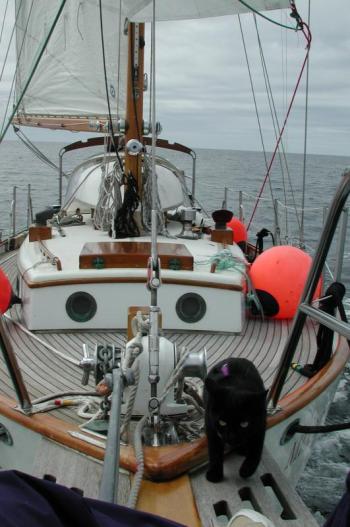 A photo of the boat Kirsten Neuschafer will sail in the Golden Globe Race 2022. (Photo by Nathalie Proulx)
A photo of the boat Kirsten Neuschafer will sail in the Golden Globe Race 2022. (Photo by Nathalie Proulx)
Kirsten Neuschafer has been an avid sailor her entire life, and will be putting her passion for sailing to the test during the Golden Globe Race in 2022. She hopes to soon head to Newfoundland to pick up the sailboat that will be her race vessel and bring it to the Midcoast for a refit.
Neuschafer will be the only female competing in the race that includes 35 sailors circumventing the globe, 30,000 miles nonstop, starting in France. They will do so with no outside assistance and no modern technology.
Born on a small farm in South Africa, Neuschafer developed a love for the outdoors and was greatly exposed to the art of sailing.
“I was fortunate to be introduced as a child, to sailing in the form of optimists, dabchicks, hoby-cats, wind-surfing — mainly on dams and lakes,” she said. “My father was a keen sailor, who would have liked to have set off cruising, but did his duty supporting a family, instead — and in some ways my pursuit of sailing was to satisfy the curiosity of what it must be like to cruise around the world.”
Sailing dinghies as a child, she grew to love the sport of sailing and spending time on the water.
“I have been passionate about the ocean since ever I first laid eyes on it,” she said. “And I absolutely love adventure.”
After completing her high school education in her native South Africa, Neuschafer began an extended walk-about to Europe and North America, becoming a professional sailor incorporating many of her passions — her love of the sport, the ocean, the greater outdoors and adventure.
Five years ago, she began working on Pelagic, a 50-foot sloop with a steel, custom-built lifting keel and rudder.
Pelagic belongs to high-latitude sailor and explorer Skip Novak, who is an official advisor on Neuschafer’s Golden Globe Race team.
For many years, Pelagic has been doing expedition charters down to high-latitude destinations such as Antarctic Peninsula, South Georgia, Falklands and Patagonia with film crews, mountaineers and scientist, according to Neuschafer.
“It had been a childhood dream of mine to get to Antarctica and the kind of places that Pelagic operates in — so working on Pelagic is really a dream-come-true, and I have been privileged to be able to see some extraordinary places, and gain an amazing amount of experience in sailing in high latitudes, ice-conditions, heavy weather and in general, mechanical boat skills,” she said.
As a skipper on Pelagic, Neuschafer is charged with passage planning, safe navigation of the vessel, managing the crew, maintenance, provisioning, looking after the well-being and safety of clients, ensuring a client’s charter goals are met, cleanliness of the vessel, food and first-aid.
“It’s a 24/7 job, when we’re underway,” she said.
Recently, Neuschafer found herself on Pelagic sailing into Maine and was able to spend most of last summer in the Midcoast, working on the Pelagic’s refit at the Lyman-Morse boatyard.
“I really got to enjoy the place and the people — a remarkably ‘nautical’ community,” she commented. “I am quite excited to be back in Maine again [...] recommissioning Pelagic for upcoming trips! The local community has welcomed me from my first day here.”
Golden Globe Race 2022
When the last edition of the Golden Globe Race was held, in 2018, Neuschafer was inspired by the event, which is a retro-style race, based on an older design with low-tech boats. The boats cannot have modern electronic equipment, meaning sailors rely on traditional, celestial navigation.
“This, to me, takes sailing back to its purest essence,” Neuschafer said. “The fact that it is a solo, non-stop, unassisted circumnavigation makes this race immensely challenging, but gives it a very interesting dynamic — where you not only need to know how to make your boat move as fast as possible, but you need to be very observant of the elements (as opposed to getting modern forecasting).”
Endurance and the ability to persist are keys for a sailor’s success during this race, she said.
“You will need to be resourceful, to solve problems with only your own two hands,” she said. “And it has the added elements of attrition and luck (which other races have to a much lesser degree), giving it that enormous element of adventure.”
Ultimately, this race is perfect for Neuschafer, as she put it.
“I love single-handed sailing — and solo adventures — so, it really is just my cup of tea,” she commented. “I thought back then already, if I got a chance to enter, I would not need to think twice.”
To prepare for the race, there are a variety of deadlines laid out by event organizers Neuschafer must meet over the next two years.
First, was to secure a boat.
Neuschafer purchased a Cape George 36 that was built in Port Townsend, Washington. The boat currently is in Newfoundland, meaning the next step will be to collect the boat from Canada.
Conforming to the requirements of the race, the boat is not longer than 36 feet, sporting a long keel with a rudder attached to the trailing edge of the keel, the design predates 1988, and more than 20 of these boats have been built out of one mold.
“I was looking for a particularly seaworthy boat, but also one that is reputedly fast, for this era and style of design — something that could be competitive to the GGR 2018’s winning Rustler 36, and I believe the Cape George 36 is the ideal boat for me,” she said.
The boat is 31 feet in length on the waterline and 10.5 feet on the beam, with a displacement of 23,300 pounds and sail area of 806 square feet with a ballast/displacement ratio of 45.06.
“A good ballast displacement ratio is really important for a race of which more than two thirds takes place in the Southern Ocean, as we know, high winds and high sea-state down there are inevitable, and there were a fair few capsizings down there in the GGR 2018,” said Neuschafer. “So, I need a boat that is really, really up for those conditions.”
There is another important reason this boat is ideal for the race.
“The other quality of the Cape George 36 is that it is reputed to track extremely well, which means, with a balanced sail-trim, it can hold its course well, and as the only permitted self-steering is a wind-vane, this will make the wind-vane’s job a lot easier, meaning less strain and wear on the gear,” Neuschafer said. “This was a problem for some of the boats in GGR 2018/19: breakage to self-steering gear, which in some cases even meant giving up the race – so this is quite a key factor. On a whole, this Cape George 36 is a serious, blue-water vessel, and I am thrilled to have it for the race.”
The boat will need to recommissioned and refitted, the latter set to be extensive with an entire new rig, adding reinforcements, water-tight bulkhead and companionway.
Neuschafer knows she will need to inspect every bit of the boat, replacing or repairing any worn parts or components.
Following the refit, she will need to complete a 2,000 nautical-mile qualifier on the boat using only celestial navigation and wind-vane.
“This will be a good time to get to know the boat’s sea-going qualities: for getting speed out of her, and for mastering best storm-tactics,” Neuschafer said. “And I need to work into my calendar — before or after the 2000nm qualifier — to participate in a few double-handed races, to train (and perhaps get coaching) for speed and for racing. After the qualifier, I hope to have time to still do final modifications and adjustments to the boat, and then the boat still needs to be sailed across the pond for the start in France.”
Among the steps of preparation she needs to complete is fundraising, as she anticipates needing a budget of $250,000 to $300,000.
She has established a GoFundMe fundraising page and is open to corporate sponsorships.
Leading up to the race’s start, Neuschafer predicts exciting memories will be made.
“In the preparation towards getting to the start-line, I think some of the most exciting moments, will be those last few leading up to the start, and finally getting underway,” she said. “I just imagine the last night before the start of the race: the culmination of years of preparation, but also the absolute apprehension of the great unknown and what lies ahead.”
During the race itself, Neuschafer predicts adrenaline-filled moments of sailing.
“I imagine rounding Cape Horn to be one of the most exciting moments for multiple reasons: to get around Cape Horn, the boats will reach their southern-most latitude, which is in itself scary — where things could certainly be stormy and filled with adrenaline but also, because it is a huge landmark — historically, and for any sailor, precisely because of the potential weather and seas that one can encounter down there,” she said. “Also, because it is the last of the great Capes in this race, in the Southern Ocean, after which the route goes North into the Atlantic again and back into warmer latitudes — the last leg home — one would, by then, expect to have survived the ‘worst of the worst’ so there would be good hopes thereafter of making the finish-line.”
With moments of thrill comes moments of challenge.
Neuschafer predicts the Southern Ocean will be the most challenging due to rough conditions. It is inevitable, she said, there will be breakage.
“The challenge will be to keep the boat moving as fast as possible, but without taking risks that will increase chance of breakage or even disaster, and then to be prepared and resourceful enough to deal with any breakage as it comes along,” she stated. “This will be physically as well as mentally demanding, and it might be the time when the length of the race, and various other factors, like limited food rations, the concern of catching adequate rain water, solitude, stress and fatigue, all make themselves felt even more.”
Looking at the big picture, Neuschafer says she is “fortunate and privileged” to be bestowed the opportunity to participate in the race.
“Had [it] not been for the immense encouragement, exchange of ideas and knowledge, skills, contacts and financial support of various individuals, who have helped me to get to where I am now, I would unlikely have this amazing chance,” she said. “Therefore, although this is a solo race, it really is a team effort, from the word ‘GO’, and it is impossible for me to get to the start (and therefore also finish) line, without support.”
She also is thankful for the support she is already experiencing, and will continue to experience, ahead of the race.
“The preparation that goes into this race is immense, and I need all the help I can get, be it in the form of finance, ideas, skills, knowledge, labor,” she said. “And once I am underway, knowing that there is a support group of people cheering me on and living the race with me vicariously, will be a greater support in those lonely and dark moments, than imaginable.”
Reach George Harvey and the sports department at: sports@penbaypilot.com.
Event Date
Address
United States

